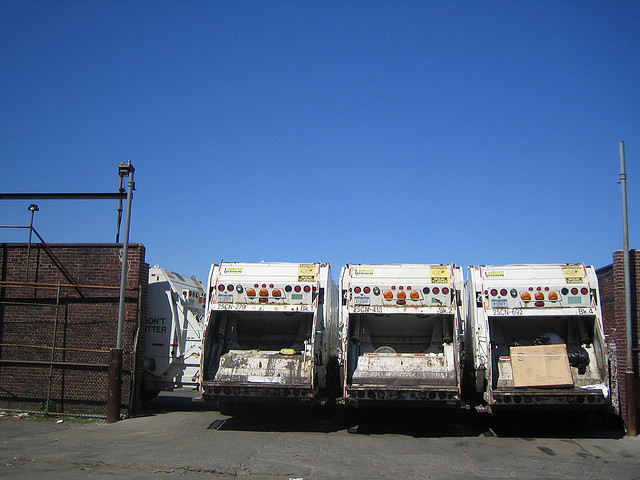Cities will convert 260 million tons of waste to energy
As urban populations continue to grow so will the amount of waste produced by cities. But with landfills reaching capacity cities are looking for alternatives.
One solution that is becoming more popular with cities is a system to convert waste to energy. According to a new report from Pike Research, in 10 years cities will convert at least 260 million tons of waste to base load power or heat each year. That number could reach as much as 396 million tons per year or 429 terawatt-hours of power.
“Ten years from now the world’s rapidly increasing urban population will generate nearly 3 billion tons of MSW [municipal solid waste] per year, representing an estimated 240 gigawatts of untapped energy potential,” says senior research analyst Mackinnon Lawrence in a statement. “The escalation in waste generation presents policy makers with a difficult choice: either expand existing landfill capacity (an unappealing, but low-cost option in many areas) or invest in new waste-to-energy capacity, which can reduce the overall volume of waste that must be dumped.”
China, which surpassed the United States as the country generating the most municipal solid waste, is rapidly expanding its waste-to-energy facilities. By 2022, 54 percent of electricity generated from waste-to-energy systems will come from the Asia Pacific region.
But doesn’t the waste-to-energy system burn trash and therefore create emissions? Yes, but the U.S. Environmental Protection Agency says that while the power plants from municipal solid waste “do emit carbon dioxide, the primary greenhouse gas, the biomass-derived portion is considered to be part of the Earth’s natural carbon cycle.”
In a study comparing energy generation from landfills and waste-to-energy plants, researchers with the U.S. EPA found that burning waste can produce 10 times more energy than from buried waste. From an emissions perspective it’s also the better option. Landfill energy generation produces two to six times more greenhouse gas emission per unit of electricity generated than burning waste to create energy.

One solution that is becoming more popular with cities is a system to convert waste to energy. According to a new report from Pike Research, in 10 years cities will convert at least 260 million tons of waste to base load power or heat each year. That number could reach as much as 396 million tons per year or 429 terawatt-hours of power.
“Ten years from now the world’s rapidly increasing urban population will generate nearly 3 billion tons of MSW [municipal solid waste] per year, representing an estimated 240 gigawatts of untapped energy potential,” says senior research analyst Mackinnon Lawrence in a statement. “The escalation in waste generation presents policy makers with a difficult choice: either expand existing landfill capacity (an unappealing, but low-cost option in many areas) or invest in new waste-to-energy capacity, which can reduce the overall volume of waste that must be dumped.”
China, which surpassed the United States as the country generating the most municipal solid waste, is rapidly expanding its waste-to-energy facilities. By 2022, 54 percent of electricity generated from waste-to-energy systems will come from the Asia Pacific region.
But doesn’t the waste-to-energy system burn trash and therefore create emissions? Yes, but the U.S. Environmental Protection Agency says that while the power plants from municipal solid waste “do emit carbon dioxide, the primary greenhouse gas, the biomass-derived portion is considered to be part of the Earth’s natural carbon cycle.”
In a study comparing energy generation from landfills and waste-to-energy plants, researchers with the U.S. EPA found that burning waste can produce 10 times more energy than from buried waste. From an emissions perspective it’s also the better option. Landfill energy generation produces two to six times more greenhouse gas emission per unit of electricity generated than burning waste to create energy.

You can return to the main Market News page, or press the Back button on your browser.

